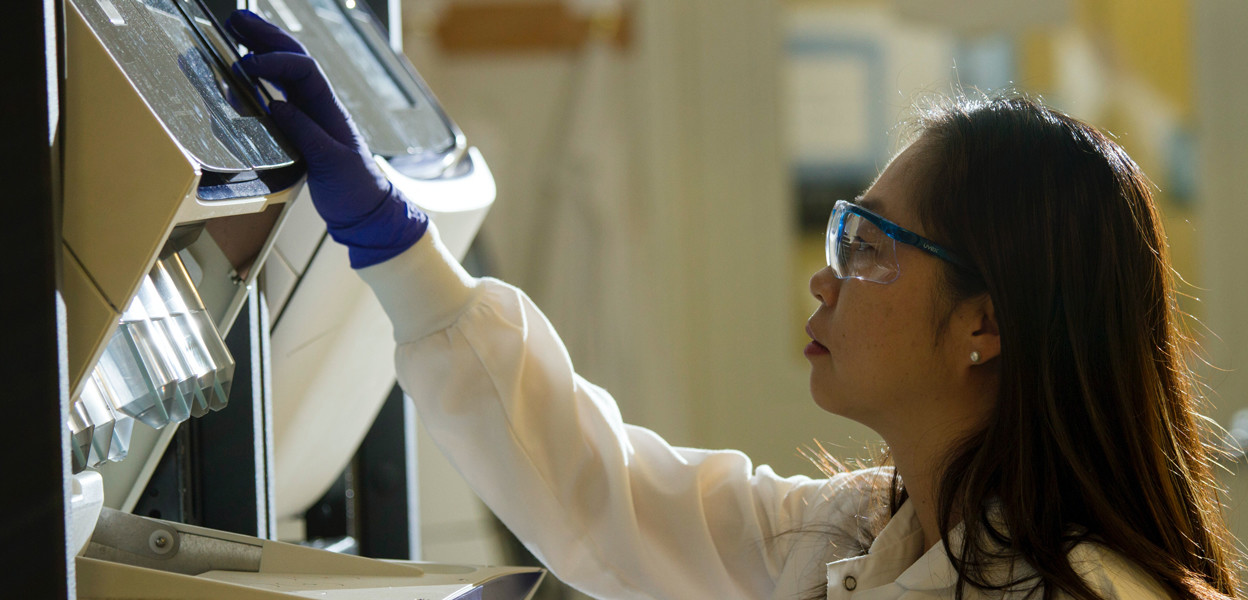- Combined Insurance


Insuring the Cure: Research & Development, Drug Discovery
The past year has been transformative for Research and Development (R&D) drug discovery companies – and for their insurers. As the pandemic has increased the urgency for vaccines and other medicines, it has magnified the unique features and challenges that underpin the work behind these drugs. Can you recall a time in our collective memory when the public has been this engaged in how vaccines are researched, how long the regulatory process takes and how susceptible it can be?
At the same time, the past year has been a transitional time for insurers, who have had to determine whether to step back from covering this challenging industry sector in the midst of a hardening market, or to step up to manage its evolving exposures. Insurers who remain in the market – and take the time to understand the special perils drug discovery companies face – stand to gain from future growth of the sector. According to Statista research, the global drug discovery market is expected to be valued at US$71 billion by 2025, up from $35.2 billion in 2016.
Spot the difference
Tapping into these opportunities requires brokers to have a strong grasp of the fundamental differences in the exposures facing drug R&D companies. Brokers must assess these companies differently from those in other sectors.
Firstly, brokers can help companies assess how susceptible their operation is to interruption – and then develop (and test and update) a back-up plan in case of disruption. For instance, a research and development laboratory will likely rely upon valued specialist machinery and/or certified clean rooms. A broker can help the insured determine to what degree it relies upon these items in order to continue operations. A company that is 100 percent reliant on one piece of highly specialised machinery could face an insurmountable problem if that machine failed and could not be replaced promptly. Brokers who are alert to such single points of failure can help a company avoid a potentially catastrophic event by constructing and implementing a comprehensive business continuity plan.
Beyond that, brokers can ensure the company is appropriately covered, such that in the event of a loss they are able to proceed from the position they were in at the time of the loss. The broker must ensure that the policy purchased by the insured covers not only loss of revenue but also the continuous costs of paying the scientists, the cost of re-creating the study, any contractually obliged costs, and any increased costs of working. In addition to understanding how aspects of drug discovery company operations pose ancillary risks, brokers can help protect their clients by accurately grasping — and structuring cover to preserve — their income streams. Specialist insurers in this sector may offer cover that reflects (and protects) the pre-agreed milestone payments, which drug discovery companies receive from pharmaceutical companies on completion of a particular stage in the research.
For example, if a drug discovery company experienced a fire a week before it was due to begin a Phase 1 trial – upon successful completion of which a milestone payment to fund its next phase of research would be paid — the insurer could effectively loan the milestone payment in order to sustain the research through its next phase of development. Secondly, unlike the goods developed by a product manufacturer, for example, R&D property that scientists develop at a drug research and development company do not have intrinsic value beyond the context of the particular study. The sum insured must therefore be assessed differently. It is determined less by the cost of the raw materials and more by the cost of the scientists’ time and the expense involved in the processes undertaken to replicate the study. The business must adapt to protect the operation against such sensitivities. An event that might pose a minor problem for another business – like a small fire or flood – could be a debilitating one for a drug discovery company. The clean rooms in which aspects of the research and development are conducted are highly controlled environments that are vulnerable to disruption, even if there is no visible damage to the facility or drug.
“A small fire causing smoke to enter a clean room or a leak of water could potentially contaminate the environment and result in an entire research study being scrapped,” said Craig Mounser, Senior Technology Development Underwriter at Travelers Europe. “Humidity can impact a study subject and therefore affect the integrity of a research. These studies are undertaken in incredibly sensitive environments.”
Pfizer’s developing vaccine for COVID-19, for one, must be kept at a temperature of -70°C, which requires specialised freezers that are found primarily in hospitals and academic labs. If that temperature threshold is not maintained, Mounser says, there is a small window of time in which the vaccine can be saved. Drug discovery companies must also manage these challenges against a backdrop of escalating urgency.
“The speed at which companies have been able to get drugs through initial-stage through phase-3 clinical trials this year is unprecedented,” Mounser said late last year. “Ordinarily it would take 12-14 years and a billion pounds of investment to bring a drug to market. That period has shrunk to less than a year. “
Customised risk management and cover for a unique sector
The sensitivity of drugs in development, along with the urgency in bringing them to market, require specialised risk management, business continuity and disaster recovery planning, as well as bespoke insurance protection. The sensitivity of drugs in development, along with the urgency in bringing them to market, require specialised risk management, business continuity and disaster recovery planning, as well as bespoke insurance protection. Brokers and insurers are naturally alert to risks – but whilst the typical risks do apply to R&D drug discovery companies, there are others that are particular to this specialist sector.
“Brokers almost need to forget the standard non-tech company template and look at each R&D drug discovery company’s very individual exposure,” Mounser said. “Too often I see the value of a company’s antibodies and cell cultures thrown in with the value of its tables and chairs. Travelers’ Med Tech product has a separate basis of settlement for R&D Property and a bespoke section specifically to cater for spoilage, contamination and condemnation of undamaged property.”
Those brokers who are willing and able to invest the time to understand and appreciate the R&D drug discovery sector and its perils become critical partners to those businesses. “Very few brokers specialise in this sector,” Mounser said, “so for those that recognise and understand its differences, I firmly believe there is opportunity for growth.”
Links:
https://www.statista.com/statistics/765535/drug-discovery-market-worldwide-by-segment-globally/
https://fortune.com/2020/11/28/pfizer-covid-vaccine-cold-storage-update/
The Knowledge Newsletter
Subscribe to The Knowledge for a no-nonsense view into the latest research and trends before it makes its way to our blog.
We will only use your email address to send you this newsletter. You can unsubscribe at any time. Privacy Policy













